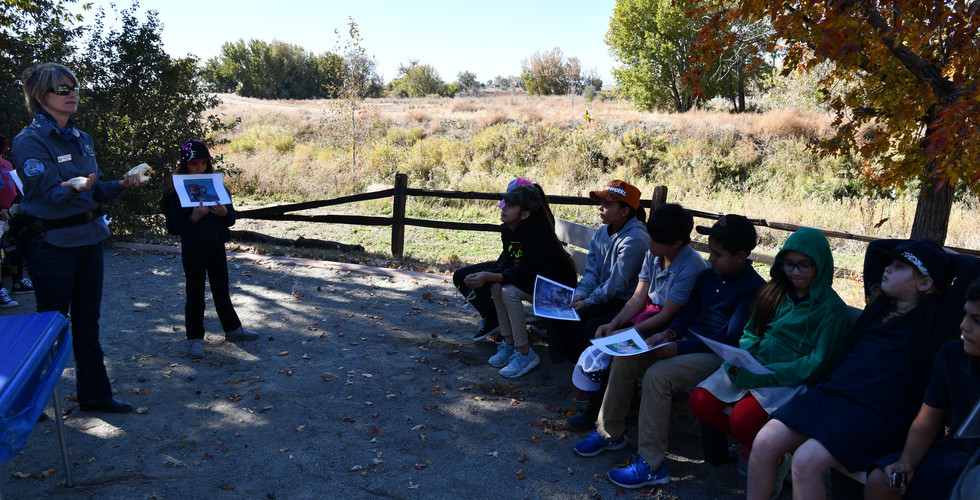Barr Lake Nature Walk with Pinnacle Charter School
- Sabrina Chande
- Oct 26, 2018
- 3 min read
On Friday, October 16th, fourth grade students from Pinnacle Charter School hopped on a bus and drove up to Barr Lake State Park for a field trip. For some of them, it was their first time at a State Park. Students left the trip having felt that they made a connection to the outdoors and also gained more insight on riparian and prairie ecosystems.
The fourth grade classes were split into four groups, and started at one of six stations along the nature walk. They spent about 20 minutes at each station, touching on different topics including ecosystems, adaptations, habitats, food chains and the history of Barr Lake.
Students in the Nature Center focused on riparian and prairie bird species. Barr Lake State Park is known for being a popular bird-watching destination, and you can spot all sorts of birds from Bald Eagles to Yellow Warblers to White Pelicans! Students identified several birds of prey while observing their nest-building skills. Nest building is an adaptation many birds have developed to aid in survival of their young. After some discussion on bird habitats and adaptations, students were allowed the explore the Nature Center and say hello to some of Barr Lake's animal friends including Turbo, their Netherland Dwarf rabbit.
The next station was out near the start of the Neidrach trail. There, they discussed the history of Barr Lake. About 100 years before Barr Lake became a state park in 1975, it served as an oasis for wildlife and people, providing a natural depression for a buffalo wallow. The railroad brought more settlers to the Denver area, causing the land around Barr Lake to populate and develop. Before the Clean Water Act of 1964, Barr Lake was a dumping ground for Denver's sewage, and was considered one of the most polluted places in Colorado. Today, pollution in Barr Lake has significantly decreased thanks to regulations and water treatment systems put in place. It has once again become an oasis for both wildlife and people to enjoy. The lake is separated between the north and south ends. The south end of the lake is a wildlife refuge while the north is dedicated to fishing and boating.
Because Brighton had a pretty dry summer, water was pumped for human consumption at a quicker rate than usual and as a result, the waterline was extremely low. It was low enough for them to actually walk out onto the lake bed and discuss riparian ecosystems.
Many animals benefit from riparian ecosystems including humans. From the lake bed, they were able to observe deer tracks and scat left from an unknown animal! They also found several bird feathers. Many waterfowl, wading birds and birds of prey live in this area due to the abundance of food.
Many of the students' favorite station was the eagle watching station! There is a pair of bald eagles that travel to Barr Lake every year to lay eggs and raise their young. From the gazebo, you can observe their nest across the Lake. The eagle nest lies in the wildlife refuge section of the park.
Students then walked through the cottonwood trails only to emerge in the prairie grasslands. The prairie ecosystem covers almost half of the state and is an incredible habitat for wildlife to flourish. Even though prairie ecosystems get less precipitation than a riparian ecosystem, animals and plants living there have adapted to make up for this.
The skull matching station was a fun way for students to learn more about animal anatomy and to get a closer look at their body functions and adaptations.
Overall, getting to spend a Friday morning outdoors rather than in a classroom was a refreshing change for these fourth graders. Hopefully, this trip has inspired them to explore and appreciate nature even more!
Thank you to the staff and volunteers at Barr Lake that helped make this an unforgettable trip!




















































































Comments